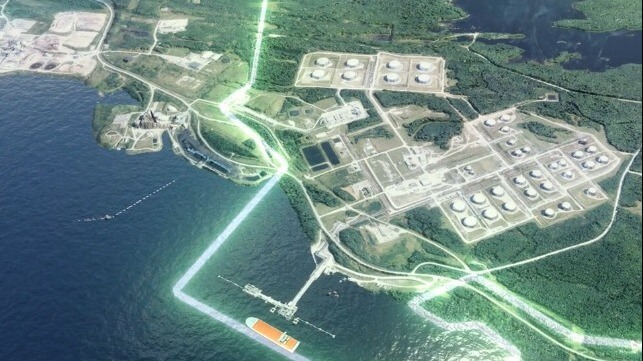Canada-Germany Form Hydrogen Alliance for Atlantic Supply of Ammonia

The first of many expected large agreements for the production and shipping of hydrogen was announced as a meeting between German Chancellor Olaf Scholz and Canadian Prime Minister Justin Trudeau concluded on Tuesday during a green hydrogen/green ammonia exhibition in the small town of Stephenville on Newfoundland in the Canadian province of Newfoundland and Labrador. While signing the joint Declaration of Intent to establish a Canada-Germany Hydrogen Alliance the countries said many details remained to be finalized, while Uniper and E.On both announced agreement for the offtake from a Canadian start-up EverWind Fuels.
Trudeau said that Canada's goal is to “become a major producer and exporter of hydrogen as well as related clean technologies.” Saying that Russia continues to weaponize energy, he said that Canada is working with its European and global partners, including Germany, to strengthen energy security and accelerate the clean energy transition.
The proposed Alliance would help establish a transatlantic Canada-Germany supply corridor, with the target of beginning export by 2025. Prime Minister Trudeau reiterated Canada’s commitment to supporting Germany’s energy needs and looked forward to continuing to work hand-in-hand with Germany to take ambitious climate action.
Schultz responded by calling Canada his country’s “partner of choice for our energy diversification.” He cited the current relationship and noted that Germany is seeking to increase its LNG imports. He said to Trudeau, “We hope that Canadian LNG will play a major role in this.” He also highlighted an agreement between Canada and German automotive manufacturers Volkswagen and Mercedes-Benz to advance collaboration in Canada across the automotive, battery, and critical minerals sectors.
As a first step in the Canada-Germany Hydrogen Alliance, Canadian start-up company EverWind Fuels announced the signing of two Memorandum of Understanding, one with Uniper to purchase green ammonia from EverWind’s initial production facility in Point Tupper, Nova Scotia, and a second similar agreement with E.On. Each call for 500,000 tons annually of green ammonia to be supplied to the German companies.
The green hydrogen will be produced at EverWind’s Point Tupper facility, a multi-phase green hydrogen and ammonia production and export facility, which is in advanced stages of development and is expected to reach commercial operation in early 2025. The production facility will use a mix of certified green power from the Nova Scotia grid and onshore wind power, achieving total production of approximately one million tonnes annually in its first phase and plans to scale up annual production to over ten million tonnes of green ammonia. Located at Port Hawkesbury, the company says it has access to an existing ice-free deep-water port with two berths that are capable of accommodating the largest vessels in the world.
The two political leaders recognized that many elements need to be developed but expressed confidence that a strong economic case would emerge to support the development. One of the key elements to be resolved is the shipping but multiple companies are already exploring the transportation of large quantities of hydrogen or ammonia. In the meantime, Canada and Germany are looking at the steps required to develop the LNG supply chain as a means of laying the foundation for the future hydrogen alliance.
